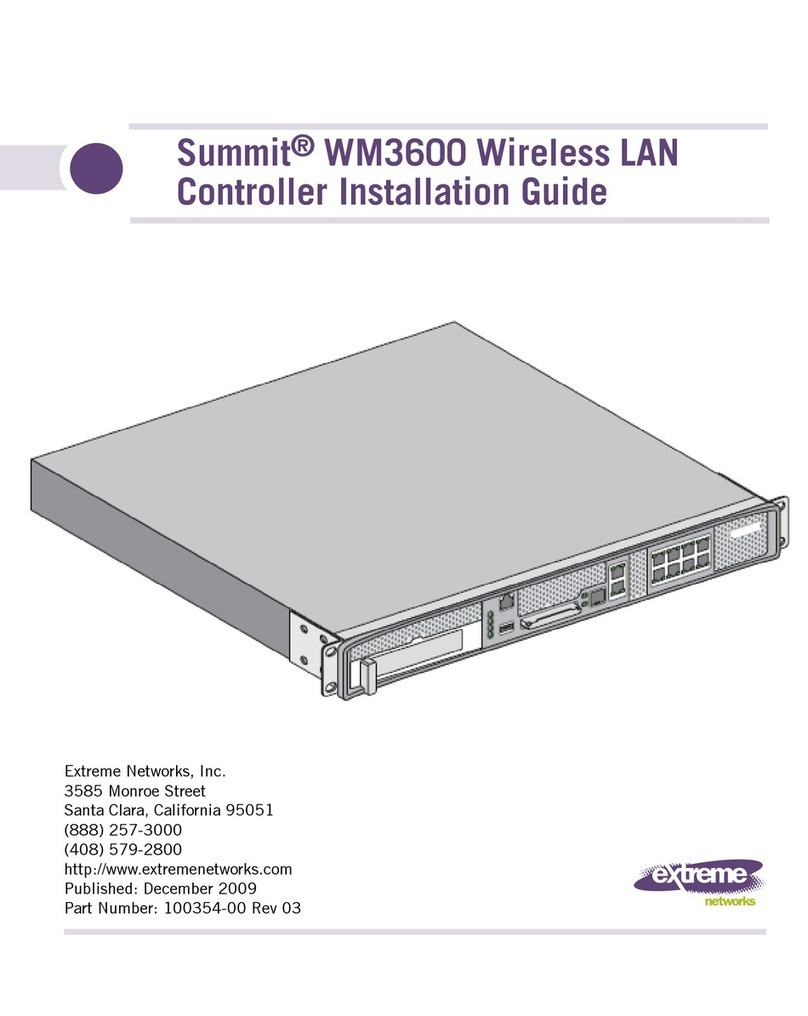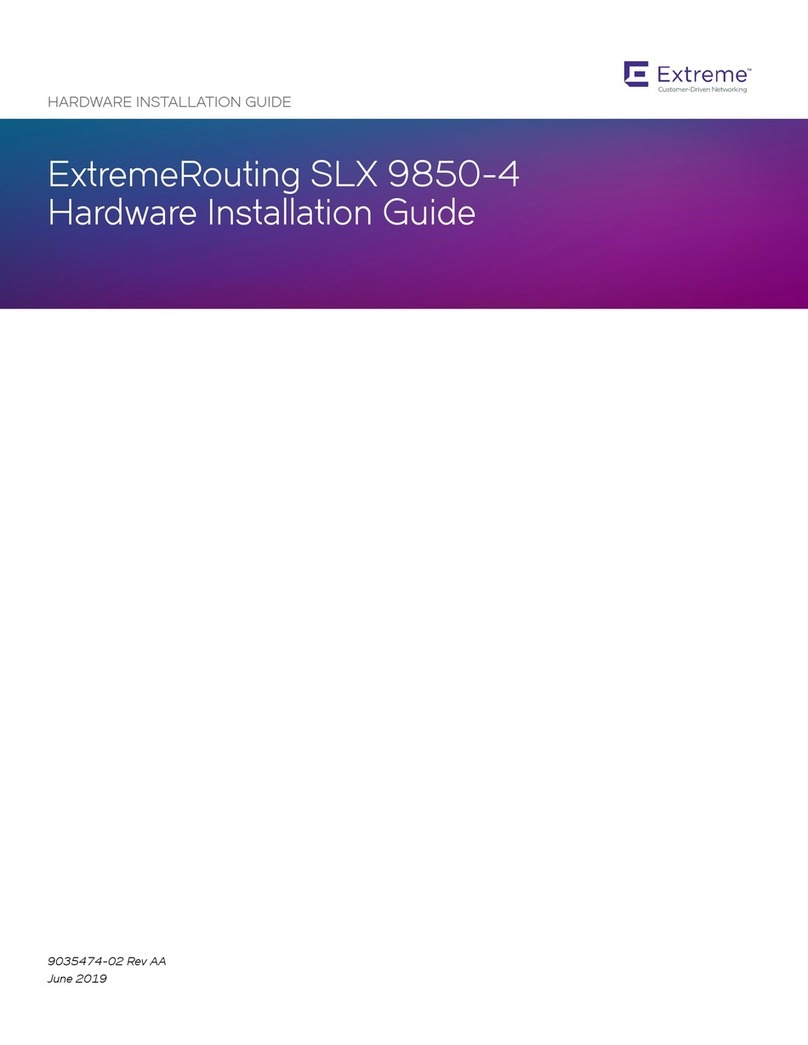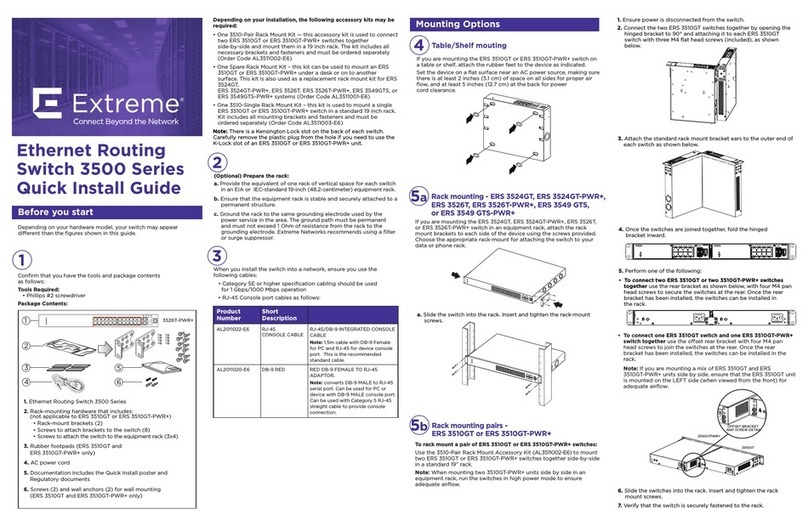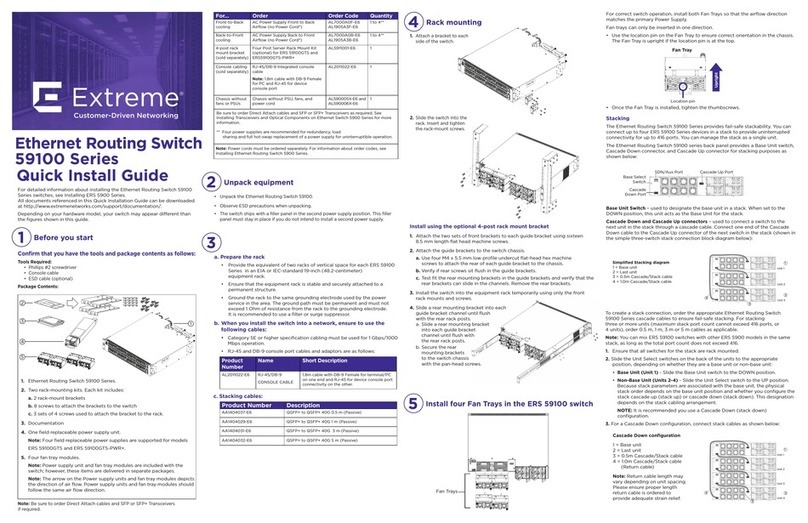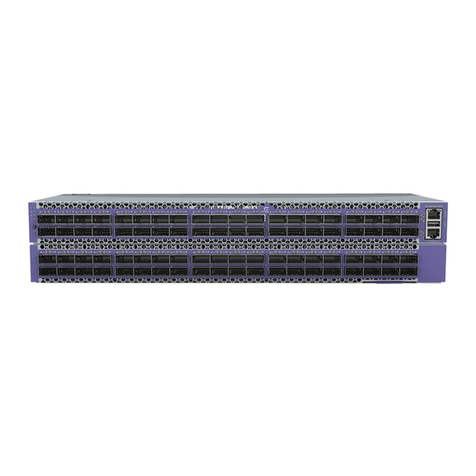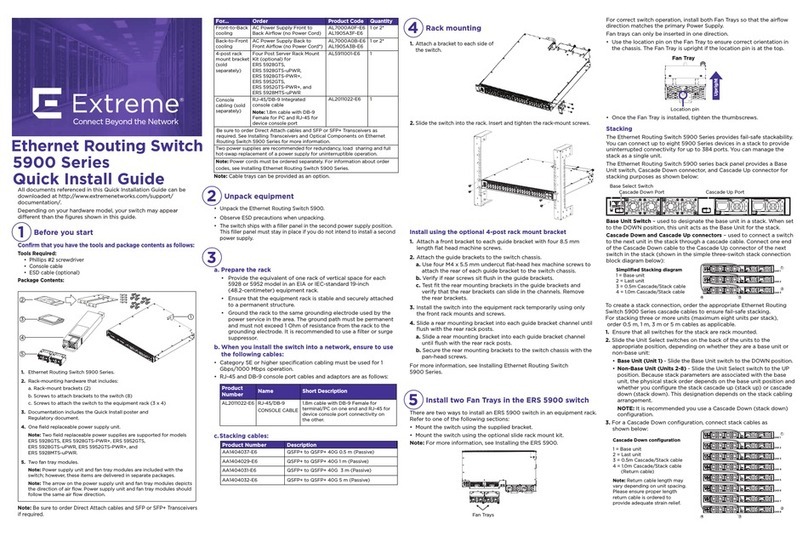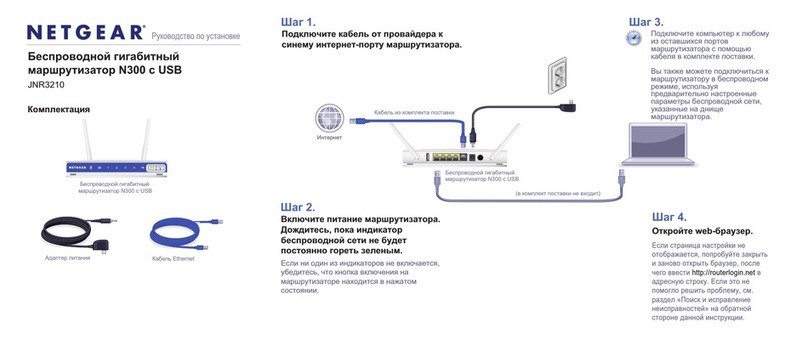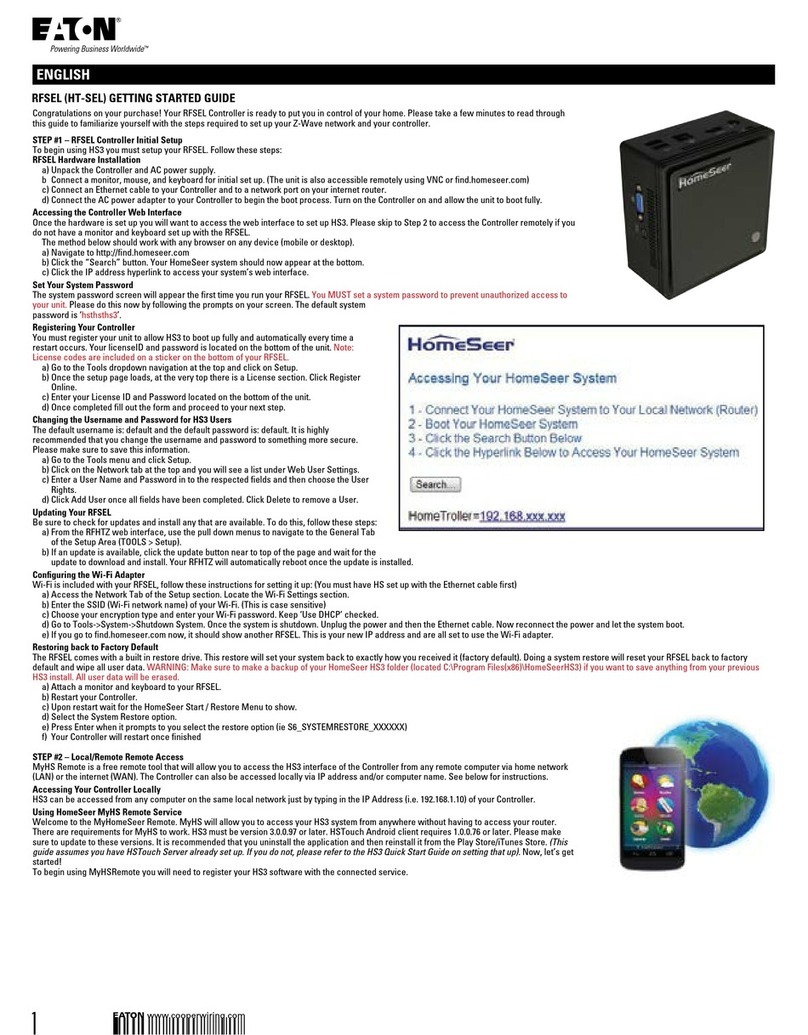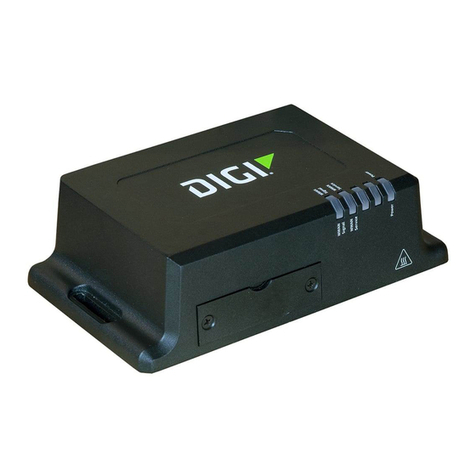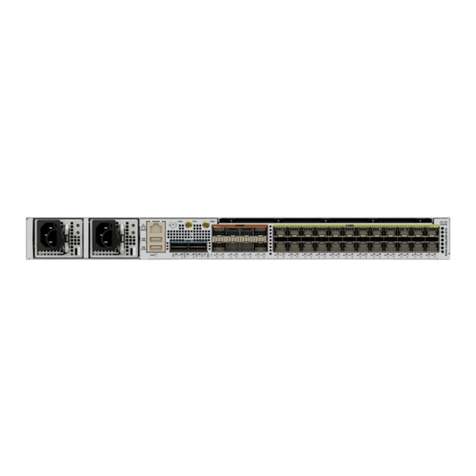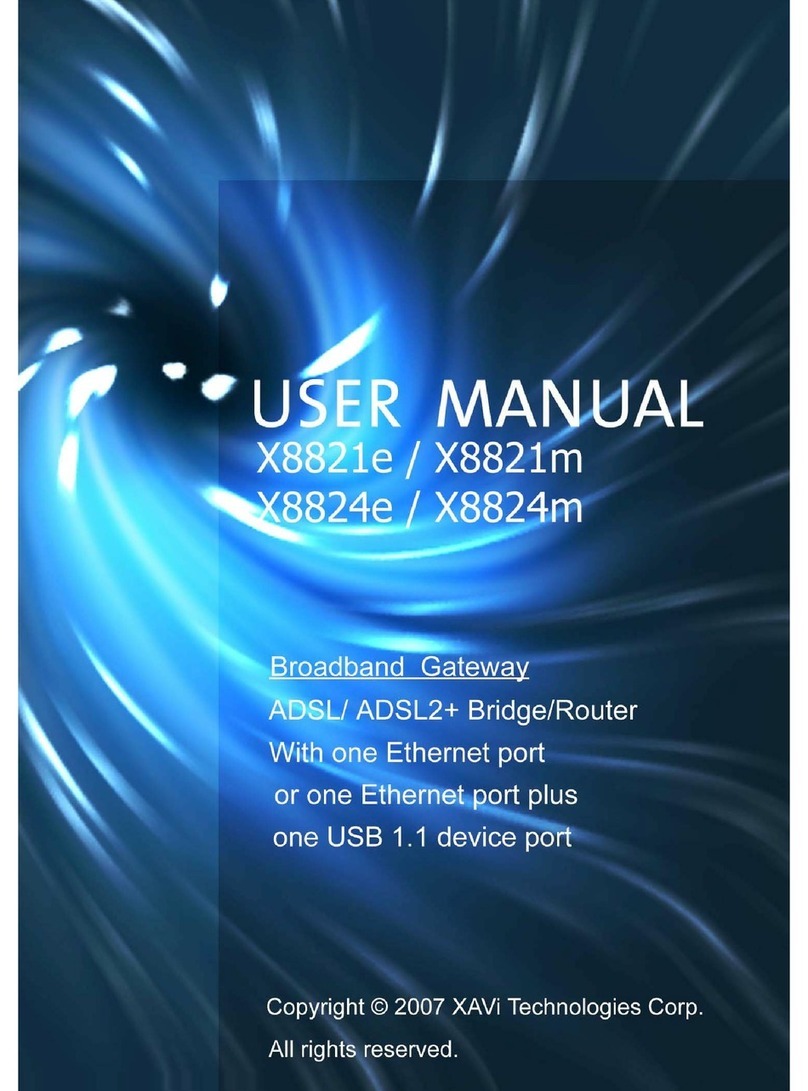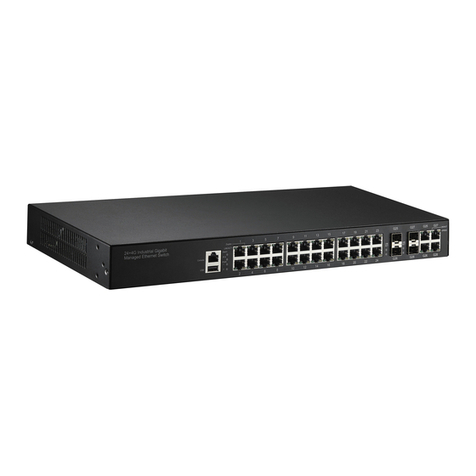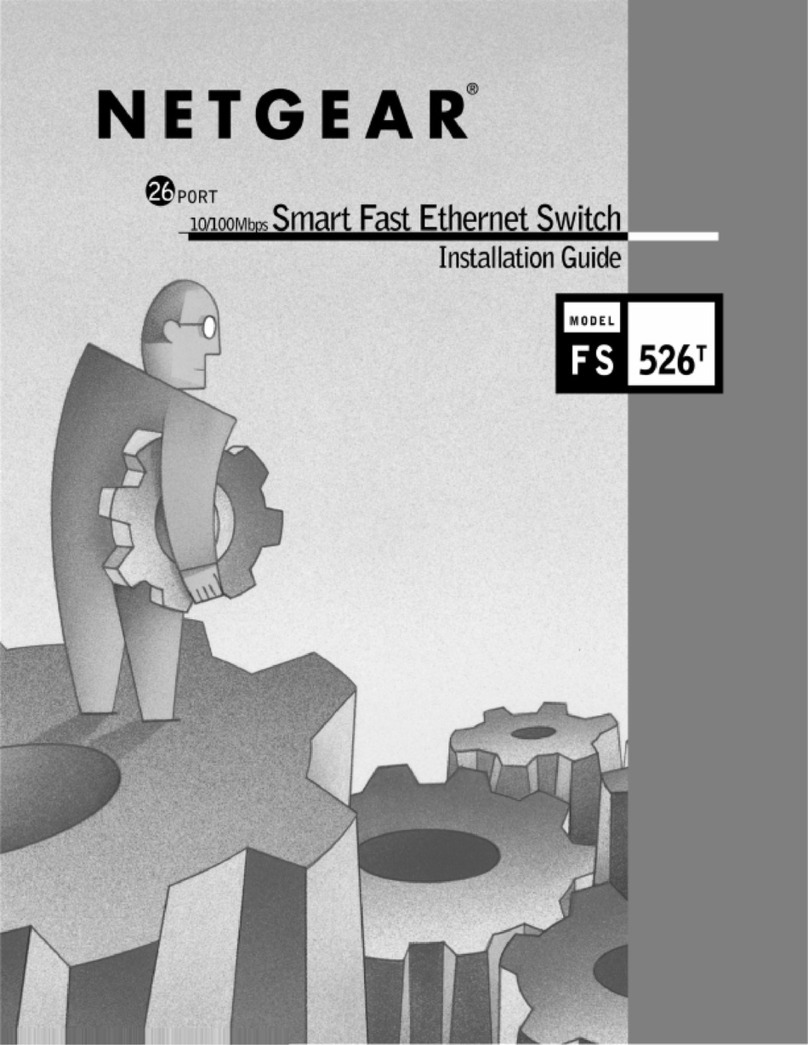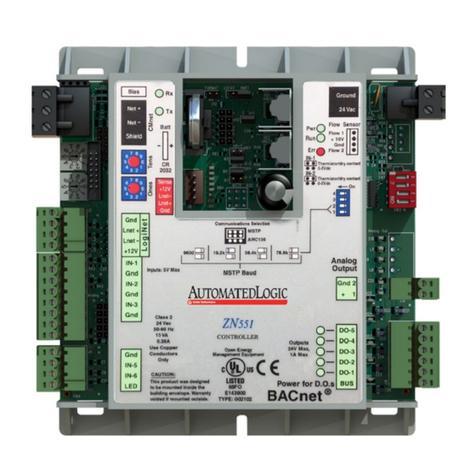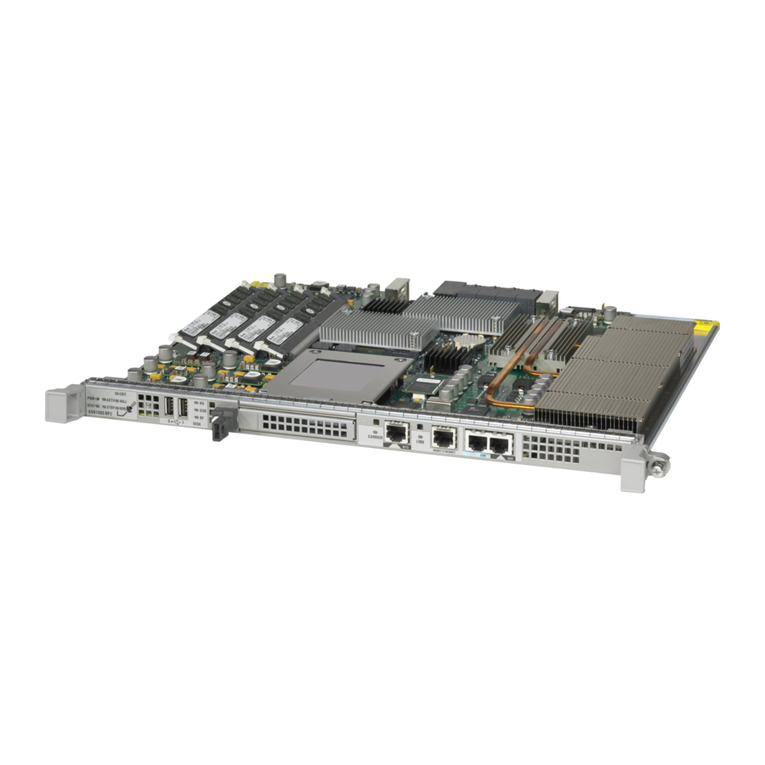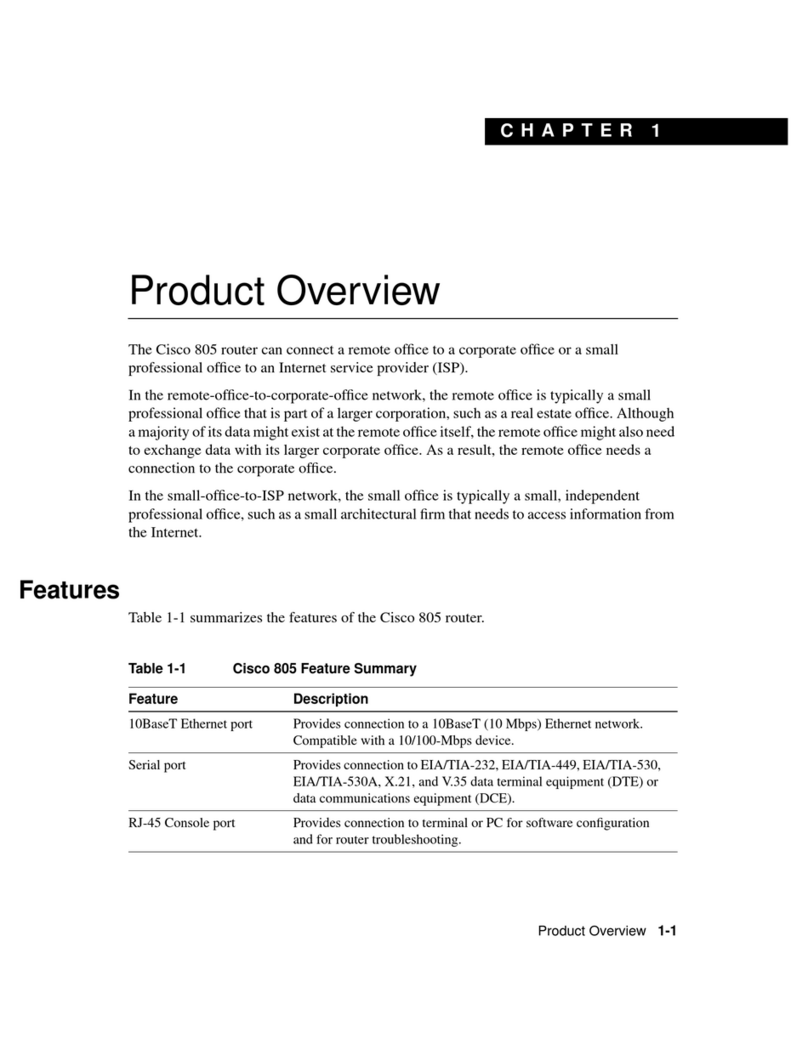Extreme Networks Data Sheet: E4G-200 Cell Site Router Technical Specifications
3
Technical Specifications
Synchronization
• Internal Stratum-3 Clock
(Telcordia GR-1244-CORE)
• Common Clock Distribution across All Ports
• External Reference Timing Input (BITS)
• Synchronous Ethernet (ITU-T G.8262)
• IEEE 1588v2 Precision Time Protocol
• Adaptive Clock Recovery (ACR) for TDM
Pseudowires
• Dierential Clock Recovery (DCR) for TDM
Pseudowires
Services
Pseudowires
• CESoPSN – Structure-Aware Time Division
Multiplexed (TDM) Circuit Emulation Service
over Packet Switched Network
• SAToP – Structure-Agnostic Time Division
Multiplexing (TDM) over Packet
• MEF 8 Implementation Agreement for the
Emulation of PDH Circuits over Metro Ethernet
Networks
• PWE3 Control Word for Use over an MPLS PSN
• Pseudowire Setup and Maintenance using the
Label Distribution Protocol (LDP) or RSVP
• Encapsulation Methods for Transport of
Ethernet over MPLS Networks
VLANs
• VLAN Tagging
• Port-based VLANs
• Protocol-based VLANs
• MAC-based VLANs
• Multiple STP domains per VLAN
• Private VLANs
• Virtual MANs (vMANs)
MPLS and VPN Services
• Multiprotocol Label Switching Architecture
• MPLS Label Stack Encoding
• RSVP Refresh Reduction
• Label Distribution Protocol (LDP)
• RSVP-TE: Extensions to RSVP for
LSP Tunnels
• Trac Engineering Extensions to OSPFv2
• Fast Re-route Extensions to RSVP-TE for LSP
(Detour Paths)
• Detecting MPLS Data Plane Failures
(LSP Ping)
• Bidirectional Forwarding Detection
Layer 2 VPNs
• Pseudowire Setup and Maintenance using the
Label Distribution Protocol (LDP)
• Encapsulation Methods for Transport of
Ethernet over MPLS Networks
• Virtual Private LAN Services (VPLS) using Label
Distribution Protocol (LDP) Signaling
• Pseudowire Virtual Circuit Connectivity
Verification (VCCV)
Resiliency
Software
• Ethernet Automatic Protection Switching
(EAPS)
• ITU G.8032v2 Ethernet Ring Protection
• Spanning Tree/Rapid Spanning Tree Protocols
• Software-Enhanced Availability
• Equal Cost Multipath
• Link Aggregation
• Multi-Switch LAG (M-LAG)
• 1:1 RSVP-TE LSP protection
• Bidirectional Forwarding Detection (BFD) based
LSP protection
Hardware
• 2 Power Feeds
• Internal Fan Array with 2 Redundant Fans – 1
active and 1 standby
Performance
• Aggregated Switch Bandwidth: 24.1 Gbps
• Frame Forwarding Rate: 17.8 Mpps
• Latency: <4 microseconds (64-byte)
• Max Packet Size: 9,216 Byte (Jumbo Frame)
• Total Trunks: 12 load sharing, Members per
trunk: 8
• VLANs: 4,094
• Ingress ACLs: 2,048
• Egress ACLs: 512
Forwarding Tables
• Layer 2/MAC Addresses: 32K
• Layer 2/Multicast Groups: 1K
• IPv4 LPM Entries: 12K
• IPv6 LPM Entries: 6K
• IPv4 Host Addresses: 8K
• IPv6 Host Addresses: 4K
• Layer 3 Interfaces: 4K
• IP Multicast Groups: 4K
CPU, Memory
• Single Core CPU, 800 Mhz clock
• 1 GB ECC DRAM
• 1 GB Compact Flash
QoS, Rate Limiting
• Ingress bandwidth meters: 2,048
• Ingress metering granularity: 8 Kbps
• Ingress bandwidth policing/rate limiting per
flow/ACL
• Egress QoS queues/port: 8
• Egress bandwidth rate shaping per egress
queue and per port
• Egress rate granularity: 8 Kbps
LED Indicators
• Per port status LED including power status
• System Status LEDs: management, fan and
power feeds
External Ports
E4G-200-DC Router
• 8 x 10/100/1000BASE-T (RJ-45)
• 4 x 100/1000BASE-X (SFP) unpopulated ports
• 1 x Serial (console port)
• 1 x 10/100BASE-T out-of-band management
port
• 1 x 15 pin D-sub – for Alarm Input / Output
E4G-200-12x-DC Router
• 12 x 100/1000BASE-X (SFP) unpopulated ports
• 1 x Serial (console port)
• 1x 10/100BASE-T out-of-band management port
• 1 x 15 pin D-sub - for Alarm Input / Output
E4G-F16T1E1 Module
• 16 x TDM E1/T1 Ports
E4G-CLK Module
• 4 x mini-BNC Ports – 1 PPS Input, 1 10MHz Input,
1PPS/8k Output, 1 1.5/2.0/10 MHz Output
• 1 x RJ45 – RS422 BITS/TOD Input
Weight and Physical
Dimensions
E4G-200-DC Router
• Weight: 7.14 lb (5.46 kg)
• Height: 1.75 inches (4.4 cm)
• Width: 17.25 inches (43.8 cm)
• Depth: 10.75 inches (27.3 cm)
E4G-200-12x-DC Router
• Weight 7.14 lb (5.46 kg)
• Height 1.75 inches (4.4 cm)
• Width 17.25 inches (43.8 cm)
• Depth 10.75 inches (27.3 cm)
E4G-F16T1E1 Module
• Weight: 2.0 lb (0.9 kg)
• Height: 1.75 inches (4.4 cm)
• Width: 6.25 inches (15.9 cm)
• Depth: 9.5 inches (24.1 cm)
E4G-CLK Module
• Weight: 0.75 lb (0.34 kg)
• Height: 1.75 inches (4.4 cm)
• Width: 2.5 inches (6.4 cm)
• Depth: 8 inches (20.32 cm)
Environmental
Specifications
Operating Temperature
• -40° C to 65° C (-40° F to 149° F)
• Humidity: 10% to 95% relative humidity,
non-condensing
• Altitude: 0 to 3,000 meters (9,850 feet)
• Shock (half sine): 30 m/s2 (3 G), 11 ms, 60
shocks
• Random vibration: 3 to 500 Hz at 1.5 G rms
Fan Speed
• Minimum: 0 RPM
• Maximum: 10,500 RPM
Airflow
• Side to side
Storage and Transportation
• Transportation Temperature: -40° C to 70° C
(-40° F to 158° F)
• Storage and Transportation Humidity: 10% to
95% RH, non-condensing
• Packaged Shock (Half Sine): 180 m/s2 (18 G),
6ms, 600 shocks
• Packaged Sine Vibration: 5-62 Hz @ Velocity
5mm/s, 62-500 Hz @ 0.2G
• Packaged Random Vibration: 5-20 Hz @ 1.0 ASD
w/-3dB/oct. from 20-200 Hz
• 14 drops min on sides & corners @ 42” (<15 kg
box)
Acoustic Noise
• Fan o : 0 dB
• Fan on : 54.1dB
